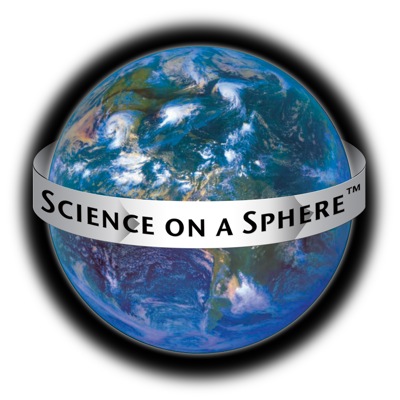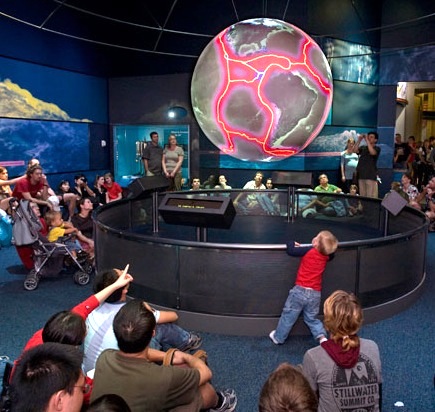 Caring for the Earth takes on a whole new dimension when you can see the entire planet the way astronauts do. Thanks to NOAA's Science on a Sphere (SOS), you don't have to travel into space, just to one of 80 public SOS exhibits across the United States and in Canada, Mexico, South Korea, Taiwan, Denmark, France, St. Lucia, China, Brazil, Finland, and Singapore.
Caring for the Earth takes on a whole new dimension when you can see the entire planet the way astronauts do. Thanks to NOAA's Science on a Sphere (SOS), you don't have to travel into space, just to one of 80 public SOS exhibits across the United States and in Canada, Mexico, South Korea, Taiwan, Denmark, France, St. Lucia, China, Brazil, Finland, and Singapore.
Seeming to float in space like Earth itself, Science On a Sphere creates stunning visual images from real scientific data and displays them on a six-foot-diameter globe suspended from the ceiling. The SOS 3-D video projectors can illuminate all kinds of Earth processes, such as massive storms forming and moving over Earth's oceans and landmasses, night lights around the world revealing Earth's most densely populated areas, energy use fueling climate change, and disease such as H1N1 influenza potentially spreading to epidemic proportions.
 The globe can also be transformed into other planets, like Mars and Jupiter, or recreate famous events in Earth science history such as the March 2011 earthquake and tsunami that devasted parts of northern Japan.
The globe can also be transformed into other planets, like Mars and Jupiter, or recreate famous events in Earth science history such as the March 2011 earthquake and tsunami that devasted parts of northern Japan.
A visit to Science on a Sphere makes a great field trip for Earth Day or any day. Online, you can find spectacular SOS movies including Blue Planet, and even "meet" SOS inventor Sandy MacDonald.
Photo Credits—top: NOAA; bottom: John Steiner, Smithsonian Institution
